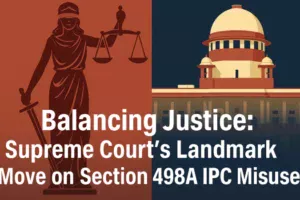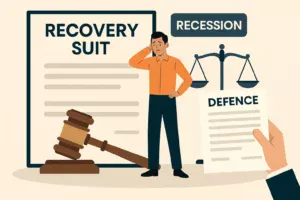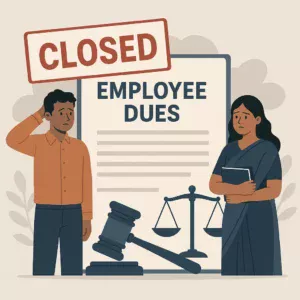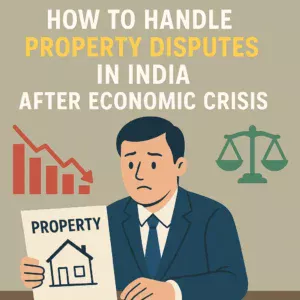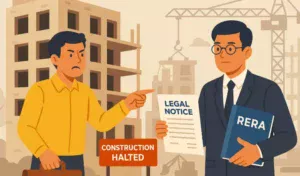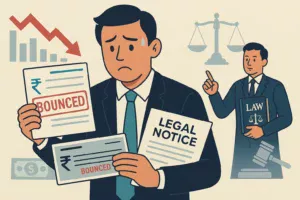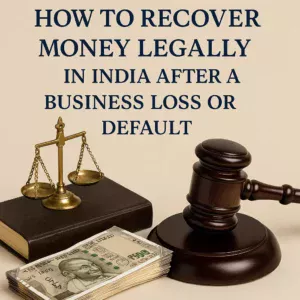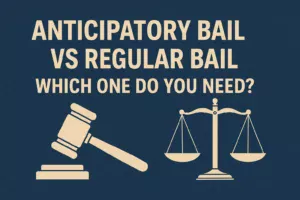This article is about Resolving Disputes With Online Sellers Over Faulty Products. In the rapidly growing e-commerce sector in India, the issue of receiving faulty or substandard products is not uncommon. For consumers, it’s crucial to know the rights and legal pathways available under Indian law for resolving such disputes. This article provides a comprehensive guide on how to address grievances related to faulty products purchased from online sellers.
Understanding Your Rights as a Consumer
The Consumer Protection Act, 2019
Under the Consumer Protection Act, 2019, consumers have several rights that protect their interests. This Act ensures that any person who buys goods or services for a consideration has the right to seek redressal against unfair trade practices or unscrupulous exploitation. If you receive a faulty product, this law empowers you to file a complaint against the seller or manufacturer.
E-Commerce Regulations
The Consumer Protection (E-Commerce) Rules, 2020, further strengthen consumer rights specifically in the context of online transactions. These rules mandate e-commerce platforms to disclose seller details, ensure return, refund, and exchange policies are clear, and provide a grievance redressal mechanism.
Resolving Disputes With Online Sellers Over Faulty Products: A Guide Under Indian Law
Step 1: Contact the Seller
Initially, reach out to the online seller through their customer service. Most e-commerce platforms have a return or exchange policy for defective items. Provide a detailed description of the issue and any evidence (photos or videos) to support your claim.
Step 2: Utilize the Platform’s Grievance Redressal Mechanism
If the seller does not respond satisfactorily, use the e-commerce platform’s grievance redressal mechanism. E-commerce rules require platforms to have a grievance officer for resolving consumer complaints.
Step 3: Consumer Forum Complaint
Should these steps not yield a resolution, file a complaint with the Consumer Forum. Depending on the value of the product or service, complaints can be filed at the District, State, or National Consumer Disputes Redressal Commission.
Filing a Complaint
- Documentation: Gather all necessary documents, including screenshots of the purchase, correspondence with the seller, and evidence of the faulty product.
- Procedure: Complaints can now be filed online through the e-Daakhil portal, making the process more accessible.
Step 4: Legal Action
As a last resort, consider legal action against the seller or manufacturer. Consulting with a legal professional can provide guidance on the viability of this option based on your specific situation.
Precautionary Measures
To minimize disputes, always check seller ratings, read product reviews, understand return and refund policies before making a purchase, and keep all transaction records.
FAQ on Resolving Disputes with Online Sellers Over Faulty Products in India
1. What should I do first if I receive a faulty product from an online seller?
Answer: Initially, contact the seller’s customer service to report the issue and seek a return, refund, or replacement.
2. Is there a time limit for returning a faulty product?
Answer: Yes, most e-commerce platforms have a return policy with a specific time limit, usually within 7 to 30 days of purchase.
3. Can I return a product if I don’t like it, even if it’s not faulty?
Answer: This depends on the seller’s return policy. Some sellers offer a “no questions asked” return policy, while others may not.
4. What evidence do I need to provide for a faulty product claim?
Answer: Photos or videos clearly showing the defect or issue with the product are usually required.
5. How can I ensure my complaint is taken seriously by an online seller?
Answer: Provide a clear, concise description of the issue, along with any supporting evidence, and follow up regularly.
6. What if the seller refuses to address my complaint?
Answer: Utilize the e-commerce platform’s grievance redressal mechanism by contacting their grievance officer.
7. How do I contact the e-commerce platform’s grievance officer?
Answer: E-commerce platforms are required to display the contact details of their grievance officer on their website.
8. Can I file a legal complaint for a small value item?
Answer: Yes, you can file a complaint with the Consumer Forum, regardless of the item’s value if your rights as a consumer have been violated.
9. What is the e-Daakhil portal?
Answer: It’s an online portal for filing consumer complaints directly with the Consumer Forum.
10. Is there a fee for filing a complaint on the e-Daakhil portal?
Answer: Yes, there is a nominal fee, which varies based on the value of the claim.
11. How long does it take to resolve a complaint filed with the Consumer Forum?
Answer: The resolution time can vary, but the Consumer Protection Act aims for the redressal of complaints within 3-4 months.
12. Do I need a lawyer to file a complaint with the Consumer Forum?
Answer: No, consumers can file complaints on their own without legal representation.
13. What remedies are available through the Consumer Forum?
Answer: Remedies can include a refund, replacement, compensation for damages, and removal of defects in the product.
14. Can I claim compensation for inconvenience and emotional distress?
Answer: Yes, you can claim compensation for any harm or distress caused by the issue.
15. What if the faulty product causes physical harm?
Answer: Report the incident to the seller and file a complaint with the Consumer Forum. You may also consider legal action for personal injury.
16. Are all online sellers covered under the Consumer Protection Act, 2019?
Answer: Yes, all sellers providing goods and services for a consideration are covered, including e-commerce platforms.
17. What if the seller is based outside India?
Answer: You can still file a complaint if the service or product was sold to you within India’s jurisdiction.
18. How can I avoid disputes with online sellers?
Answer: Check seller ratings, read reviews, understand return policies, and keep a record of all transactions.
19. What if the product warranty does not cover the defect?
Answer: You may still have rights under consumer protection laws, regardless of the warranty terms.
20. Can I file a complaint if the product was on sale?
Answer: Yes, sale items are also covered under consumer protection laws if they are faulty.
21. How can I escalate my complaint beyond the seller or e-commerce platform?
Answer: After attempting resolution with the seller, you can escalate your complaint to the Consumer Forum.
22. What is the role of the Consumer Protection Authority?
Answer: It’s a regulatory body established to enforce the Consumer Protection Act, including investigating violations.
23. Can I file a complaint on behalf of someone else?
Answer: Yes, you can file a complaint on behalf of another consumer if you have their consent.
24. What documentation is needed to file a complaint?
Answer: Purchase proof, correspondence with the seller, and evidence of the fault are typically required.
25. Can I withdraw my complaint after filing it?
Answer: Yes, you can withdraw your complaint, but it’s best to consult the forum or a legal advisor first.
26. What if the seller replaces the faulty product but the replacement is also defective?
Answer: You can file a new complaint for the replacement product if it’s also faulty.
27. Are digital products covered under the Consumer Protection Act?
Answer: Yes, digital products and services are covered under the Act.
28. What if the fault appears after the return period has ended?
Answer: You may still have rights under the Consumer Protection Act, especially if the product is under warranty.
29. Can I take action against misleading advertisements?
Answer: Yes, misleading advertisements are covered under unfair trade practices in the Consumer Protection Act.
30. How can I stay informed about my consumer rights?
Answer: Regularly check updates on the Consumer Affairs website and familiarize yourself with consumer protection laws.

